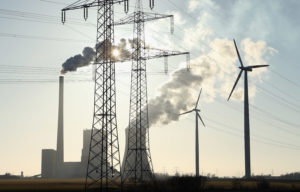Clean Energy Canada | Alberta takes prudent approach to coal transition
November 24, 2016

EDMONTON — The Government of Alberta announced today its plans to facilitate the transition away from coal-fired power. Dan Woynillowicz, policy director at Clean Energy Canada, made the following comments in response:
QUOTES
“Earlier this week the federal government announced that traditional coal-fired power plants would be phased out across Canada by 2030. That leaves provinces with coal-fired power—like Alberta—with two choices: plan for an orderly transition away from these power plants, or ensure they deploy carbon capture and storage technology.
“As the Alberta Electricity System Operator has noted, coal-fired power with carbon capture and storage is a far more expensive option to reduce carbon pollution compared to using natural gas, wind, solar and hydro power.
“Previous governments in Alberta and Ottawa offered to provide a subsidy of $779 milliontoward the $ price tag for TransAlta’s proposed coal-fired carbon capture and storage project, but even with taxpayers shouldering more than half the cost, there wasn’t a viable business case and the project was shelved.
“The government is providing for a fair transition for coal-fired power generators using revenues from the province’s price on industrial carbon pollution, instead of adding the cost to Albertans’ power bills. This approach—coupled with support to deliver 30 per cent renewable electricity generation by 2030—is far more cost-effective relative to previous efforts to encourage carbon capture and storage for coal-fired power.
“A modern electricity system must be reliable, affordable and clean—and on these measures the Alberta government is delivering a responsible approach to transitioning away from coal-fired power.”
KEY FACTS
-
SaskPower has had challenges with its $ Boundary Dam coal-fired power carbon capture and storage project. In its first year, only 400,000 tonnes of CO2 were captured—roughly 40 per cent of the promised 1 million tonnes of emission reduction—and today it is still only operating at 80 per cent capacity.
-
Even with a federal subsidy of $240 million for Boundary Dam, residents of Saskatchewan are seeing their power bills go up. In April of this year, a resident of Regina paid over 50 per cent more for their power than a resident in Calgary. Since then, SaskPower raised rates by five per cent in July, and they will go up a further five per cent in January 2017.
- In 2014, the Alberta Electricity System Operator found that coal-fired power with carbon capture and storage had the highest levelized unit cost of electricity (LUEC)*:
*The LUEC is used to estimate the comparative cost of several commercial generation technologies, by calculating the break-even cost of electricity over the lifetime of a project.
- Today, wind energy costs 61 per cent less than it did in 2009, and utility-scale solar PV costs are down 82 per cent. (Source: Clean Energy Canada)